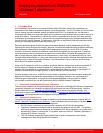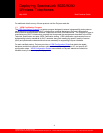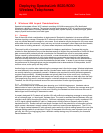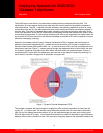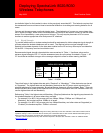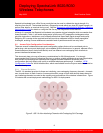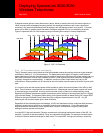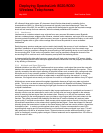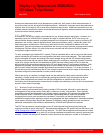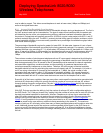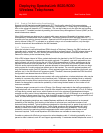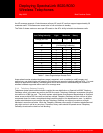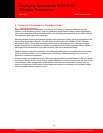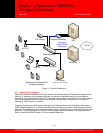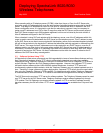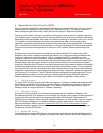
Deploying SpectraLink 8020/8030
Wireless Telephones
May 2009 Best Practices Guide
Access point antennas should not be placed near a metal roof, wall, beam or other metal obstruction in
any environment, as this will amplify the reflection effects. Additionally, antennas should be positioned so
that they have line of sight (LoS) to most of the clients that they service. Additional instructions from the
wireless network infrastructure vendor should be followed with regard to antenna selection and placement
to provide correct diversity operation.
2.2.5 Site Surveys
A wireless RF site survey is highly recommended for any wireless network deployment. However, it is
especially critical for VoWLAN and is essential for large or complex facilities. An RF site survey can
ensure that the wireless network is optimally designed and configured to support voice by confirming RF
placement, cell overlap, channel allocation/reuse, packet transmission quality, packet retry rates, and
other deployment considerations. While many tools exist that allow customers to perform their own
assessment, Polycom recommends a professional site survey to ensure optimum coverage and minimum
interference. Polycom offers a full suite of site-survey services that will ensure a WLAN is properly
configured to support wireless voice.
To verify coverage of an installed Wi-Fi network, Polycom handsets offer a site-survey mode that can be
used to validate the AP locations and configurations are both correct and adequate. This mode detects
the four strongest AP signals and displays the signal strength along with the AP channel assignments.
The site survey mode may be used to detect areas with poor coverage or interfering channels; check for
rogue APs; confirm the Service Set Identification (SSID) and data rates of each AP and include the
security and QoS mechanisms supported by the AP; and detect some AP configuration problems. With
SpectraLink handsets, the entire coverage area must be checked to ensure that at least one access
point’s output meets the signal strength requirements summarized in Section 2.1.2 of this document. If
the site-survey mode indicates that two APs are using the same channel within range of the handset, it is
important to adjust the channelization to avoid channel conflicts.
After a site survey is complete, coverage issues can be resolved by adding and/or relocating APs if
necessary. Overlap issues may be resolved by reassigning channels or by relocating some access
points. When adjustments are made to the WLAN configuration an additional site survey or site
verification should be performed to ensure that the changes are satisfactory and have not had an adverse
impact in other areas of coverage.
2.3 Wireless Telephone Capacity
Network capacity requirements factor into the number of APs required, although in most cases the
coverage area is the primary factor. Data traffic is often very “bursty” and sporadic. This is typically
acceptable because data applications can tolerate network congestion with reduced throughput and
slower response times. Voice traffic cannot tolerate unpredictable delays, where the bandwidth
requirements are much more constant and consistent. Voice traffic can also be predicted using
probabilistic usage models, allowing a network to be designed with high confidence in meeting anticipated
voice capacity requirements. Beyond the standard IP telephony design guidelines, there are several
additional considerations that should be addressed for VoWLAN with SpectraLink handsets.
The SVP Server prevents oversubscription of an AP and improved load balancing by limiting the
maximum number of active calls per AP. Recommended settings are AP specific and can be found in the
VIEW Configuration Guides
on the Polycom web site. The SVP Server determines the maximum number
of wireless telephones in-call on a given AP and forces handsets to handoff when capacity maximums are
reached. Overall, the calls per AP specified is often lower than the maximum number an individual AP
11
©2009 Polycom, Inc. All rights reserved.
Polycom and the Polycom logo are registered trademarks of Polycom, Inc. All other trademarks are the property of Polycom, Inc. or their respective companies.



